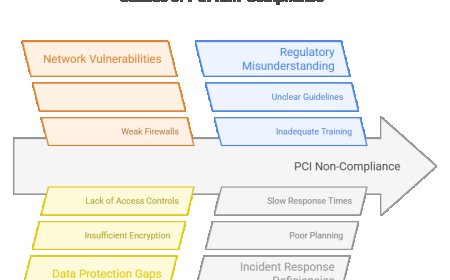How to Interpret Your Internet Speed Test Results: A Beginner’s Guide
Confused by speed test results? Learn to interpret ping, download, upload, and jitter speed test metrics in this simple guide for beginners.

Running a speed test is easy, but understanding the results? Thats where many people get stuck. Whether you're working from home, streaming Netflix, or troubleshooting slow internet, knowing how to interpret your internet speed test resultsincluding terms like ping, download, upload, and jitter speed testcan make a big difference.
In this beginner-friendly guide, well break it all down so you can take control of your internet experience.
What Is an Internet Speed Test?
An internet speed test is a tool that measures how fast data travels between your device and the internet. It checks multiple components:
-
Download speed
-
Upload speed
-
Ping (latency)
-
Jitter
Each plays a unique role in your internet performance, and ignoring them could mean missing out on smoother streaming, faster downloads, and better video calls.
1. Download Speed
What it means: How quickly data is transferred from the internet to your device.
Measured in: Mbps (Megabits per second)
Why it matters: A higher download speed ensures smooth streaming, quick file downloads, and uninterrupted browsing.
-
Streaming HD: Needs at least 5 Mbps
-
Streaming 4K: Requires 25 Mbps or more
-
Online gaming: Minimum 3-6 Mbps
2. Upload Speed
What it means: How fast your device sends data to the internet.
Measured in: Mbps
Why it matters: Important for video calls, uploading large files, and cloud backups.
-
Video conferencing: Ideally 3-5 Mbps or higher
-
Posting to social media or YouTube? Go for 10+ Mbps
3. Ping (Latency)
What it means: The time it takes for your device to send a request and get a response from a server.
Measured in: Milliseconds (ms)
Why it matters: Lower ping = faster response. Crucial for online gaming, video calls, and live streams.
-
< 20ms: Excellent
-
2050ms: Good
-
50100ms: Average
-
100ms: Lag may occur
4. Jitter (The Hidden Metric You Shouldnt Ignore)
What is jitter?
Jitter measures the variability in ping over time. Think of it as the consistency of your internet connection. Even if your ping is low, a high jitter speed test result could cause delays or glitches.
Why it matters:
High jitter leads to buffering during video streaming, robotic voices during calls, and lag in online games.
-
020ms: Ideal
-
2040ms: Acceptable for most tasks
-
40ms: May cause noticeable issues
Running a jitter speed test regularly helps ensure your connection is stable, not just fast.
How to Use These Results in Real Life
Knowing what each number means is great, but heres how to use them:
-
Frequent video calls? Focus on upload speed and low jitter.
-
Streaming or gaming? Prioritize low ping and high download speed.
-
Smart home lagging? A speed test can reveal if your router is struggling or your bandwidth is maxed out.
Tips for Accurate Speed Testing
-
Use a wired connection for best results.
-
Disconnect unused devices while testing.
-
Run tests at different times of the day to spot slow periods.
-
Repeat jitter speed tests to confirm network stability.
Final Thoughts
In 2025, a fast and stable internet connection is no longer optionalits essential. But speed alone isnt everything. By understanding your internet speed test results, especially lesser-known metrics like jitter, you can make smarter decisions about your home setup, your ISP, or even when its time to upgrade your router.
Take the guesswork out of your Wi-Fi experience. Start interpreting your speed tests like a proand enjoy smoother streaming, clearer calls, and frustration-free browsing.









































